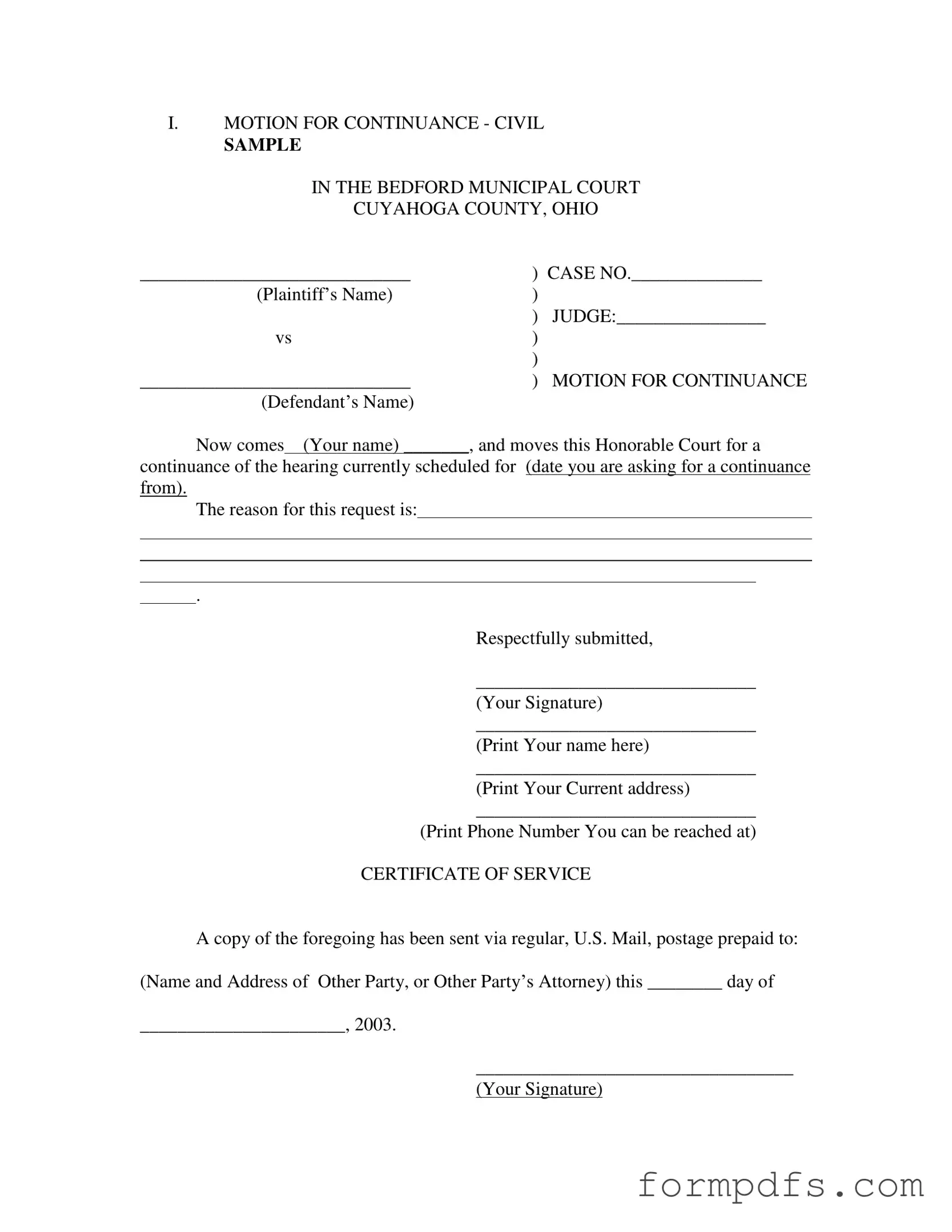What is a Motion for Continuance?
A Motion for Continuance is a formal request to postpone a scheduled court hearing or trial. This motion is typically filed by one of the parties involved in a case when they believe they cannot adequately prepare or attend the hearing on the scheduled date. The request must provide a valid reason for the delay.
How do I fill out the Motion for Continuance form?
To complete the Motion for Continuance form, start by entering the case number and the names of the parties involved in the case. Next, indicate the date of the hearing you wish to postpone. You must also provide a clear explanation for your request in the designated area. Finally, sign the form, print your name, and provide your current address and phone number.
What reasons can I provide for requesting a continuance?
Common reasons for requesting a continuance include personal emergencies, illness, scheduling conflicts, or the need for more time to gather evidence or prepare a legal argument. It is important to ensure that the reason you provide is legitimate and can be supported if necessary.
How far in advance should I file the Motion for Continuance?
It is advisable to file the Motion for Continuance as soon as you become aware of the need for a delay. Courts generally prefer that motions be submitted well in advance of the scheduled hearing date to allow time for the judge to consider the request and for the other party to respond.
What happens after I file the Motion for Continuance?
Once you file the Motion for Continuance, the court will review your request. The judge may either grant or deny the motion. If granted, a new hearing date will be set. If denied, you must prepare to attend the original hearing date as scheduled.
Do I need to notify the other party about my Motion for Continuance?
Yes, you are required to notify the other party or their attorney about your Motion for Continuance. This is typically done by sending a copy of the motion via regular U.S. mail, as indicated in the "Certificate of Service" section of the form. Ensure that you complete this section accurately to confirm that the other party has been informed.
Can I request a continuance for any type of hearing?
While you can request a continuance for various types of hearings, approval is not guaranteed. The judge will consider the specifics of your case, the reason for the request, and any potential impact on the other party. Some hearings, such as those with strict deadlines, may be less likely to be postponed.
What if my Motion for Continuance is denied?
If your Motion for Continuance is denied, you must prepare to proceed with the hearing as originally scheduled. It is essential to have all necessary documents and evidence ready for presentation. Consider consulting with an attorney for guidance on how to proceed effectively.
